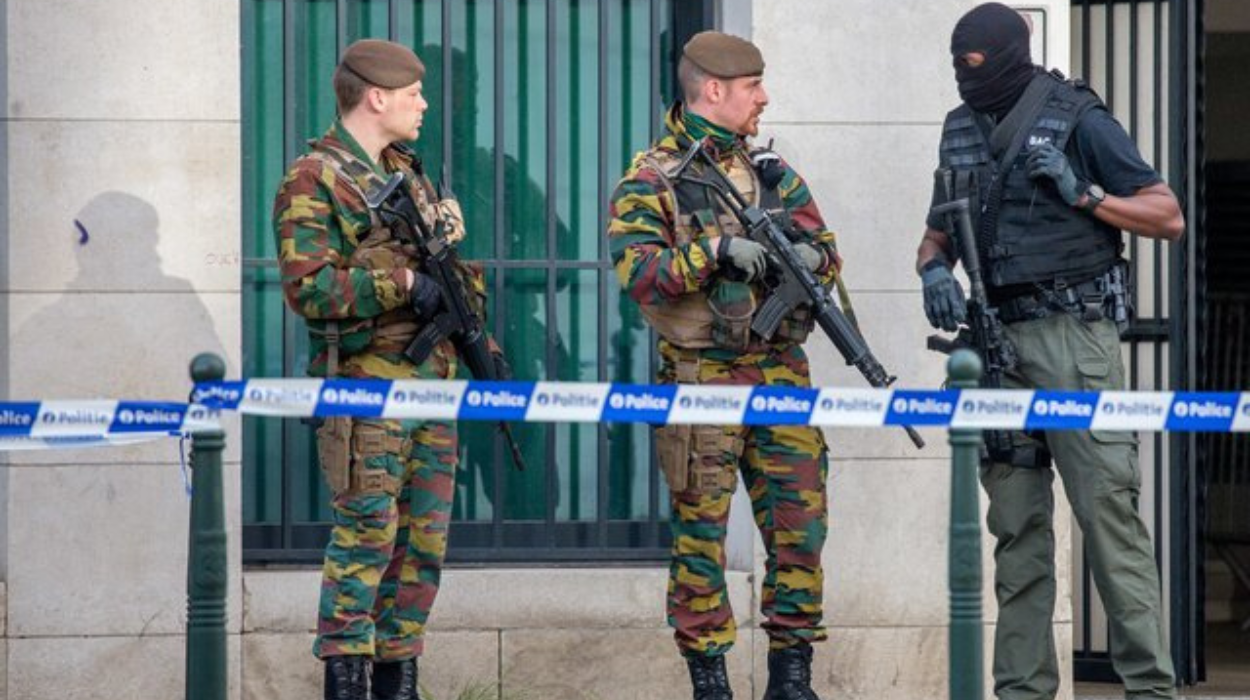Brussels ( Brussels Morning) – Belgium maintains its terror threat level at 3 due to increased extremist activities in 2023, following a significant rise in reported threats.
According to Belgium’s Coordination Unit for Threat Analysis (OCAM), the threat level will for now remain at 3 out of 4 in Belgium, revealing a probable and severe threat. A shifting to level 4 – as seen in France – is not being evaluated, according to a spokesperson.
France increased its Vigipirate plan to the highest threat level, termed an “emergency attack”, after the terrorist raid in Moscow on Friday night. The Islamic State group asserted responsibility for the attack, which forced at least 137 fatalities and injured 182 people, based on the latest figures.
In Belgium, meanwhile, OCAM – liable for threat analysis – decided to preserve a threat level of 3 out of 4. This level has been in standing since the Brussels attack on 16 October, which claimed the lives of two Swedish football lovers. The rate has been maintained since then, partly due to escalating concerns in the Middle East and the wave of anti-Semitism, OCAM explained.
Level 4 represents an “imminent and severe threat”, a justification not presently warranted, according to the coordination unit.
However, in 2023 Belgium’s OCAD marked a significant rise in threats. OCAD had received 41% more terror threats in 2023, either directly or via partners, it announced in its annual report in 2023. It registered 332 reports on terrorism or extremism in 2023 compared to 236 threats received in 2022.
The rise was attributed to the “major emotional trigger events” seen in 2023, which prompted strong emotions and led extremists to take action. It pointed to the escalating Israeli aggression on Gaza following the Hamas attacks on 7 October 2023. Additionally, the 16 October attack in Brussels, in which two Swedish football fans were shot dead on Boulevard d’Ypres near Place Sainctelette, a 20-minute walk from Grand Place, had a sizeable impact on the number of threats OCAD received.
More than half (55%) of all 332 reports acquired by OCAD were classified as a low danger, likely including false school bombing signals reported last year. Just over a third of the threats were rated as medium, while 7% were considered very severe, with the October terror attack rated as “very serious and imminent.” OCAD analyzed threat declarations before determining a level of 1 to 4 and took any necessary protective actions.
“Since this attack, the general threat level in Belgium was raised to 3 (severe) on a scale of 4,” the report read. “In the Brussels region, level 4, the highest level, was in place for a while. Our country had not been in threat level 3 since January 2018.”
OCAD received the most threat reports in October, followed by November – a clear influence of the terror attack. Spring 2023 saw a large number of files concerning multiple individuals that led to arrests, while July and August saw the lowest number of threat reports.
Most incidents happened in Brussels (126 reports), followed by Antwerp (86), Liège (44), Ghent (34), and Mons (20). The remaining threats were not allocated clear geographical locations. The distribution of threats was essentially the same as in 2022. Most threats involved lone actors, with just over 10% of threat reports involving plots by a group of people.




